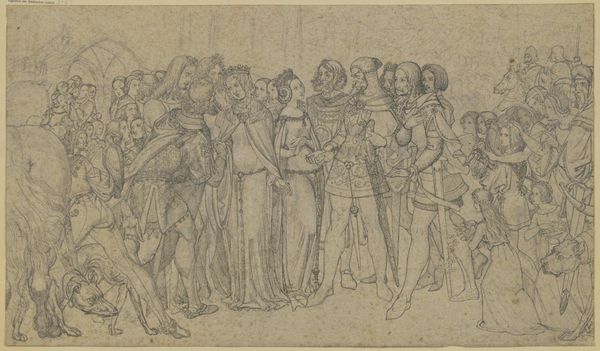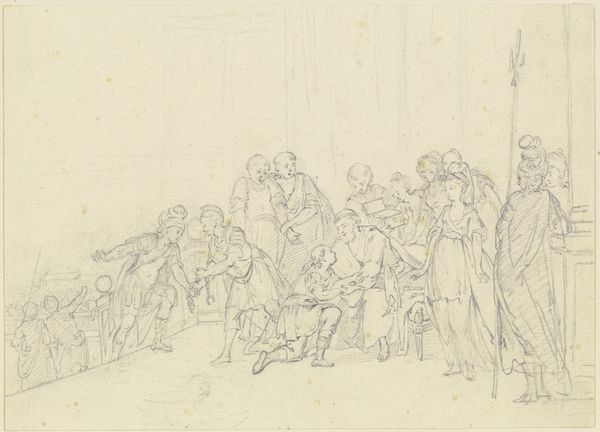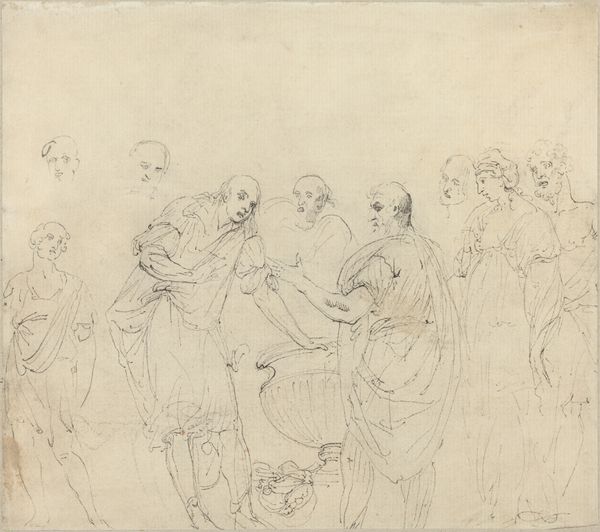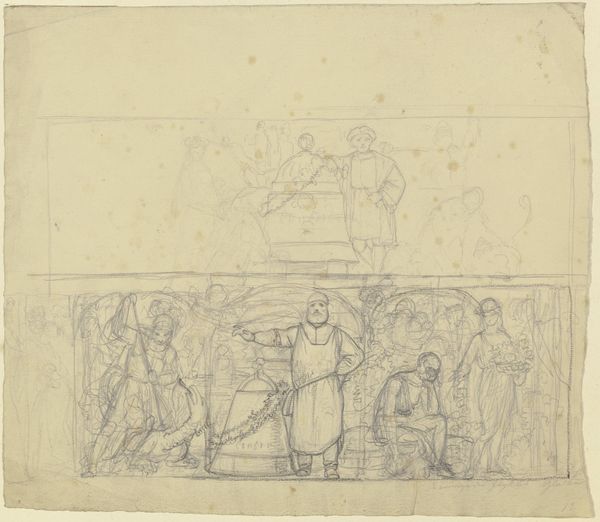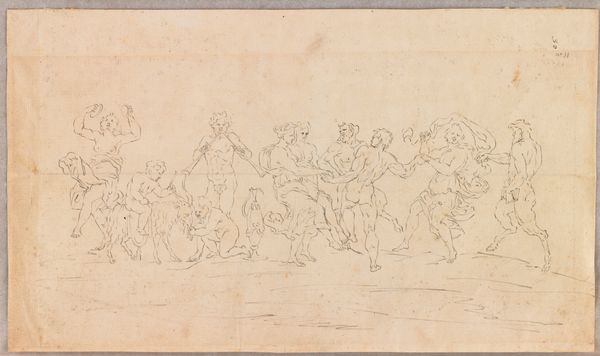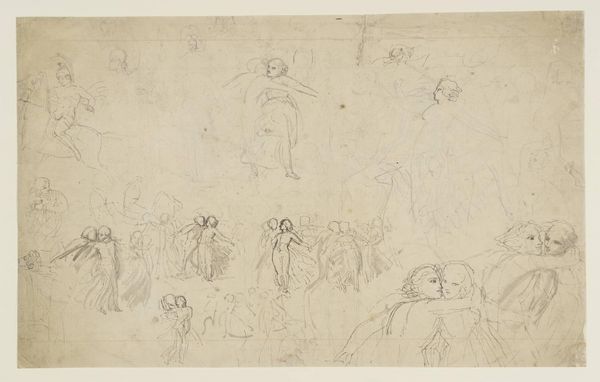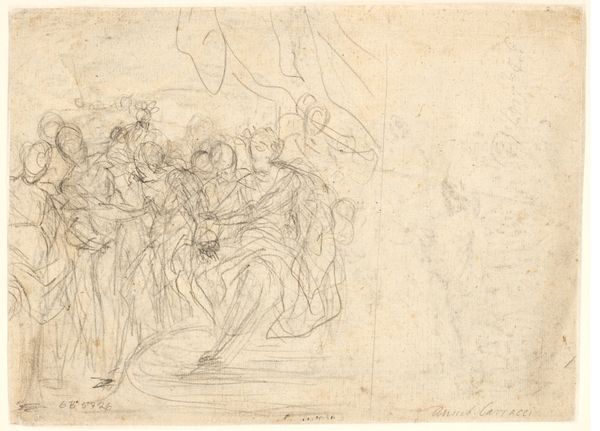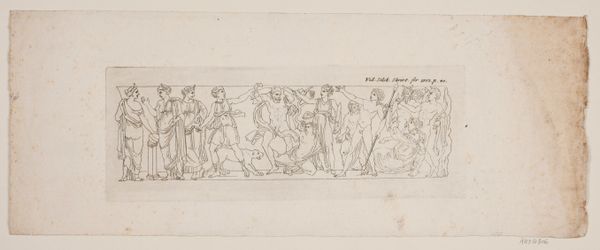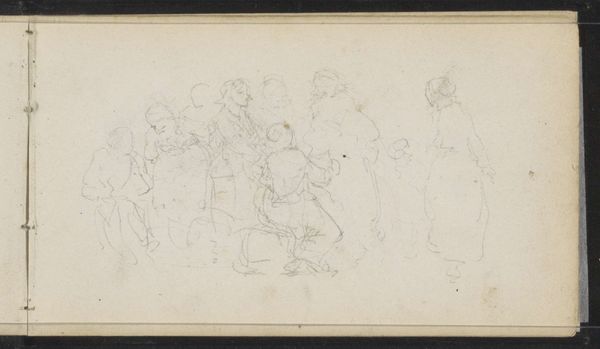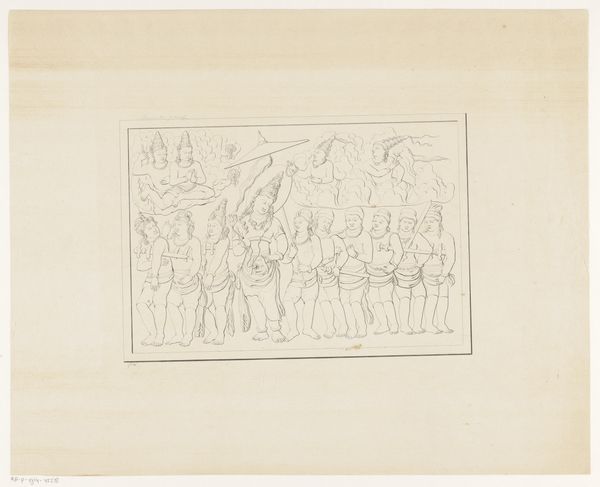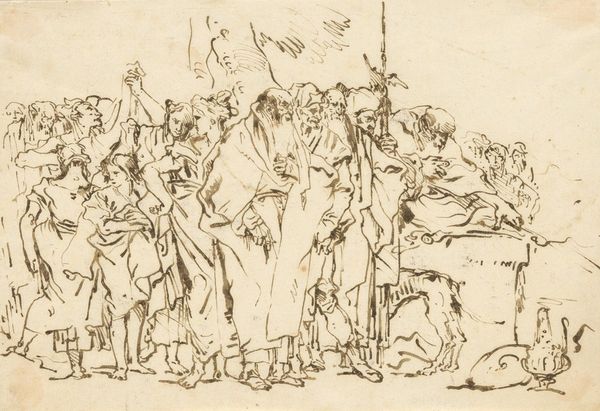
Die Versöhnung Kaiser Ottos des Großen mit seinem Bruder Heinrich (_)
0:00
0:00
drawing, ink
#
drawing
#
medieval
#
narrative-art
#
figuration
#
ink
#
line
#
history-painting
Copyright: Public Domain
Editor: Here we have Franz Pforr's "The Reconciliation of Emperor Otto the Great with his Brother Henry," rendered in ink. The lines are so delicate, almost hesitant. It evokes a very staged, ceremonial atmosphere. How would you approach analyzing this work? Curator: From a materialist perspective, the drawing itself, its very existence, signals a claim. Look at the labor involved in producing such a detailed work. It wasn't just about skill, but time and resources – who commissioned it, and why prioritize this specific historical narrative? Editor: So, you're focusing on the production process? The economic and social implications of creating something like this? Curator: Exactly. Consider the type of ink used, the quality of the paper. Was this preparatory work or an end in itself? What was the intended audience? Each element hints at the social relationships and the value system that elevated history painting and figuration in that period. Editor: I see what you mean. It’s not just about the scene depicted, but who had the means to commission and create such a record. Were there workshops, apprentices involved in churning out similar works, transforming history into commodities? Curator: Precisely. The labor aspect reveals so much. Were these materials readily available? Were certain pigments more costly than others? Those decisions shaped the image we see, embodying societal preferences and limitations. Editor: So, thinking about it as an object tied to specific production methods changes how we interpret its narrative meaning too. It's not just history; it's a constructed, consumed product of its time. Curator: Absolutely. Analyzing the drawing through the lens of its material production offers insights into how historical events were curated, consumed, and imbued with symbolic power in Pforr's world. Editor: That's fascinating! It reframes my perspective entirely, shifting focus from just 'who' and 'what' to the 'how' and 'why' of its material existence. Curator: Indeed. By looking at the material, we're uncovering hidden stories about the artist’s context, the commissioner's intent, and the viewer's consumption of history.
Comments
No comments
Be the first to comment and join the conversation on the ultimate creative platform.
